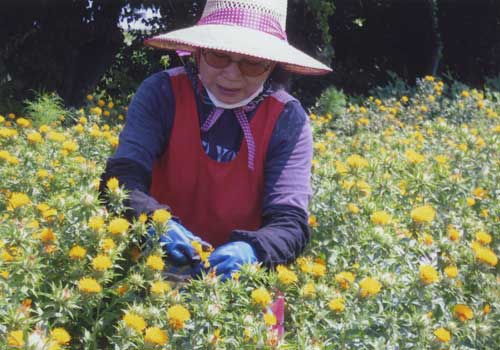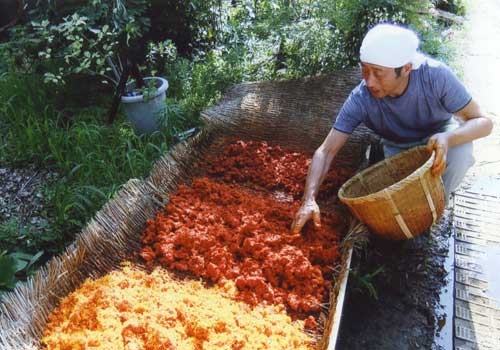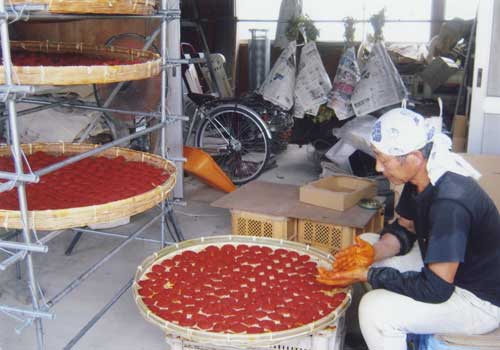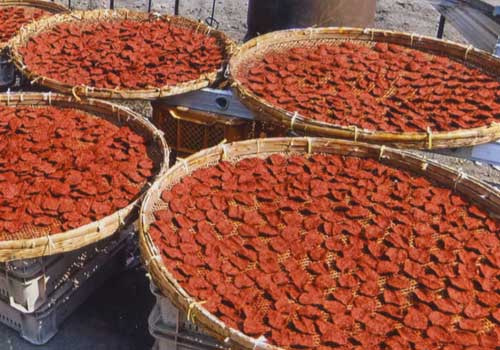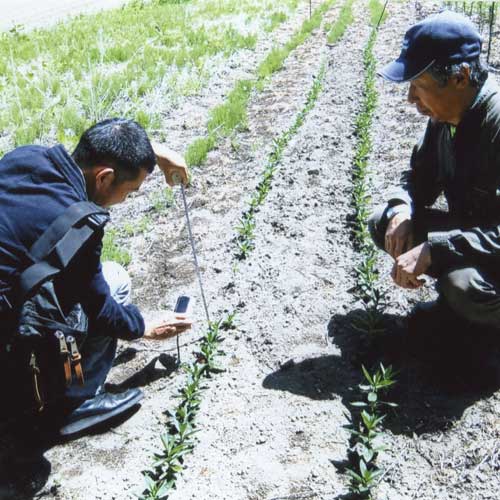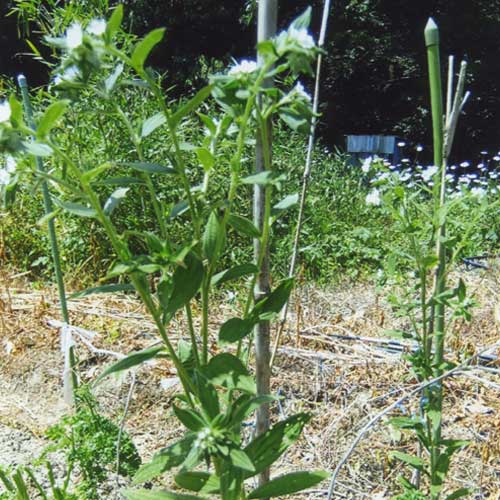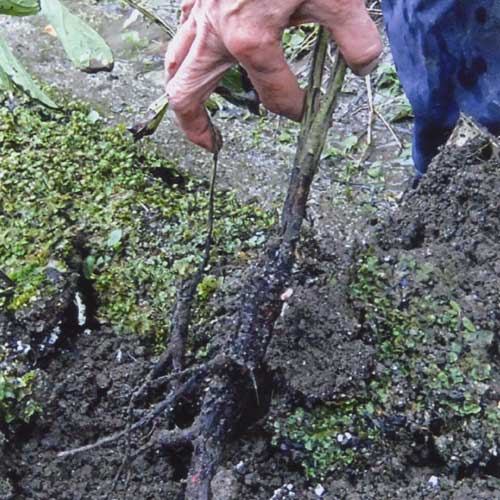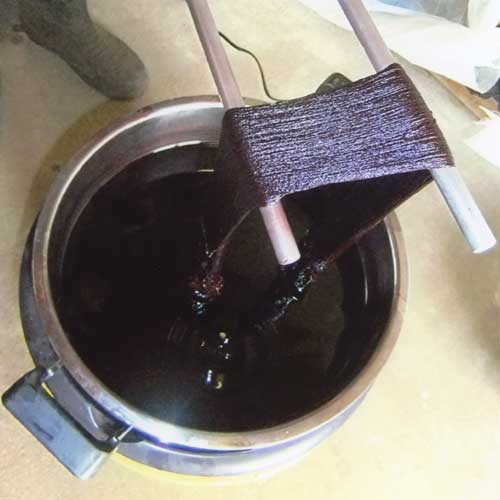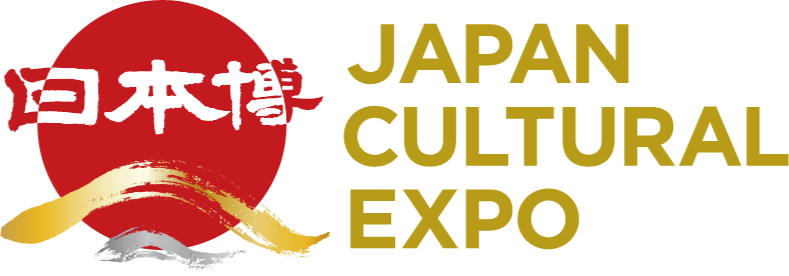
Vegetable Dyes from Safflower
and Purple Gromwell
Plants that have been important sources of dyes Techniques
from the past that are still in use today
Society for the Preservation
of Japanese Handicrafts
Designated in 1979
6F Marunouchi Nijubashi Building, 3-2-2 Marunouchi,
Chiyoda-ku, Tokyo 100-0005
The beni or red-orange dye from the safflower (Carthamus tinctorius) and the root of the purple gromwell (Lithospermum erythrorhizon) have long been among the most important vegetable dyes in Japan, essential for the coloring of traditional clothing and handicrafts. Safflower was introduced to Japan in ancient times from Egypt and Asia Minor via China. Purple gromwell also received mention in the Manyōshū, Japan’s oldest extant anthology of poems believed to have been compiled in the 8th century. Its root is the source of a beautiful purple dye. The advantages of natural vegetable dyes are again being recognized and attracting attention today.
